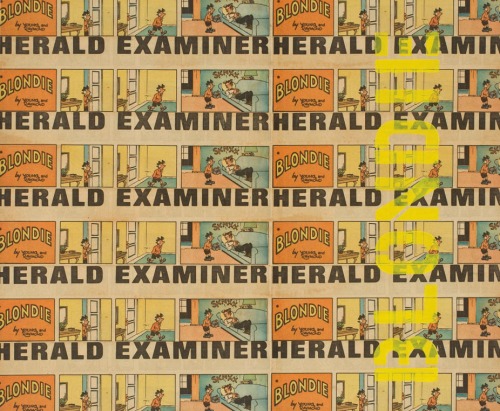The December 11, 2011 Important Modern Art & Design auction was LAMA’s highest grossing sale since opening in 1992. The auction saw bargains to records and everything in between. The sell through rate was roughly 72%, but some may wonder, “What happens to the other 28% that did not sell?” Well, we sell these unsold lots post-auction, meaning you can beat the competition and purchase these pieces NOW. These unsold lots are not to be taken lightly – some key works slipped through the cracks in Sunday’s auction. Peter Loughrey, Director of LAMA, picks his top five unsold investment pieces that are ready, waiting, and available for purchase. Better than money in the bank, these five pieces will definitely go up in value:
#5 //
Lot 52
Donald Judd
Untitled
Judd, a giant in the Minimal/Conceptual Movement, will always be a sought after name. These works have consistently sold for more, however this one is slipping through the cracks. (Buy it now price: $3,250)
#4 //
Lot 103
Frank Gehry
Desk
This unique desk, created the same year as the architect’s own iconic house, is a beautiful large writing desk. Unique examples from Gehry are taken for granted in Los Angeles, but are coveted in Europe. You can buy this one close to the source for very little. Literally and figuratively a “blue” chip investment. (Buy it now price: $18,750)
#3 //
Lot 217
Philip Johnson
Floor Lamp
Other examples of this iconic floor lamp have recently sold in the $10,000 – 15,000 range, however exceptional examples have changed hands for over $25,000. This example belonged to the designer himself and has the preferred earlier bronze colored patina. Additionally, this example was used in the architect’s famous Glass House. It is sold with a copy of a letter from the architect confirming the authenticity. This is a historical object that will never lose its appeal. (Buy it now price: $31,250)
#2 //
Lot 317
Andy Warhol
Flowers
One of Warhol’s most iconic images and also the one that you will most likely never get tired of looking at (who wants to stare at Mao all day?), Flowers in this colorway is selling for a historically low price right now. If you don’t believe Warhol prices will go back to where they were in 2008, then this piece is not for you. However, if you want the surest thing we have ever sold, buy this now and let me sell it for you 5 years from now. (Buy it now price: $25,000)
#1 //
Lot 152
Robert Graham
Elisa
One of Graham’s most iconic sculptures, Elisa is one of a grouping from 1993 where each casting had a unique patina. Since no two are the same, each work is like getting an original bronze by the late master. Other examples have a history for selling for more and will again in the future. (Buy it now price: $50,000)


































 distance–the opposite of playfulness and freedom–that sadly can be the gallery and museum experience. And what if you’re not only counting your pennies but are afraid of being called a slave to brand names? What could be less ostentatious than a work by Anonymous, Lot 5 entitled !&!&!& I & Yield–a series of five smart and colorful calligraphic blasts.
distance–the opposite of playfulness and freedom–that sadly can be the gallery and museum experience. And what if you’re not only counting your pennies but are afraid of being called a slave to brand names? What could be less ostentatious than a work by Anonymous, Lot 5 entitled !&!&!& I & Yield–a series of five smart and colorful calligraphic blasts.








